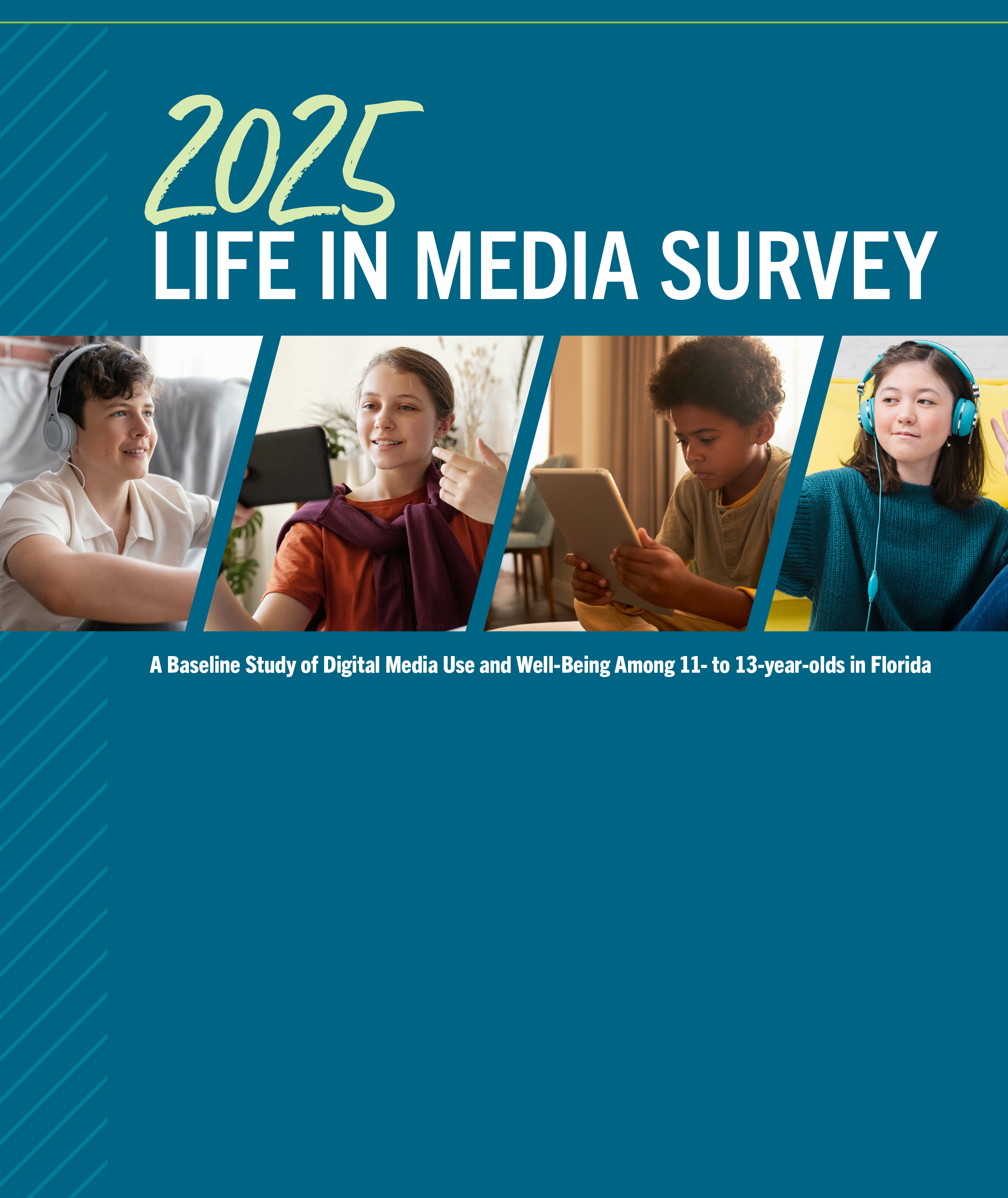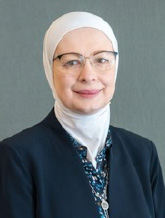Journalism and Digital Communication
Life In Media Survey

This is the first output related to the Life in Media Survey and is a study of N=1,510 11- to 13-year-olds in Florida, surveyed Nov.-Dec. 2024. It may be the most comprehensive and thorough survey of digital media use and wellness among young adolescents ever conducted. The study covers smartphone ownership and use, social media use, gaming, news consumption, streaming, cyberbullying, depression, sleep deprivation, anxiety, and other topics among a statewide representative sample in Florida. It was conducted by researchers at the University of South Florida and the data were collected by The Harris Poll.
In the future, the Life in Media Survey will study the same 11- to 13-year-olds, tracking them for years into the future, to analyze digital media use and well-being over time.
Click here for the full report, or on the cover art below.
To contact the corresponding author, email justindmartin@usf.edu or lifeinmediasurvey@gmail.com.
Full Report | Foreword | Executive Summary & Conclusions | Method & Questionnaire
Report Authors
News Coverage
Academic Papers
Conference papers
Rote, W. M., Martin, J. D., & Song, S. W. (2025, forthcoming). Parental mediation of early adolescent media use: Latent profiles and associations with youth adjustment and digital behavior. To be presented at the Digital Media and Developing Minds International Scientific Congress, Washington, D.C., July.
Song, S. W., Scacco, J. M., McLauchlan, J. S., Rance, L. T. & Martin, J. D. (2025, forthcoming). Household Partisan Composition and Source Credibility Perceptions in Adolescents. To be presented at Assessing Affective Polarization among Young People, hosted by the Institute for Citizens & Scholars and Georgetown University’s Civic Education Research Lab, Washington, D.C., April.
Journal article
Under review (2025). Anxious adolescents? Digital media use, perceived technological impairment, and internalizing problems among 11- to 13-year-olds.











